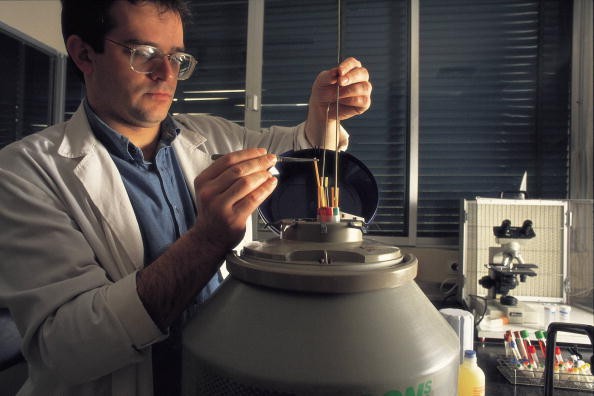World's Oldest Sperm May Be A Window To The Past
| Staff Reporter | | Jul 15, 2015 09:43 PM EDT |
(Photo : Getty Images/Pepe Franco) A group of scientists from Stockholm were in awe upon the discovery of a 50-million-year-old sperm of a worm-like creature which was fossilized.
In Science, it is widely known that living things without bones do not fossilize easily as compared to those who have. These include worms, leeches and sperm. But, a group of scientists from Stockholm were in awe upon the discovery of a 50-million-year-old sperm of a worm-like creature which was fossilized.
Like Us on Facebook
In a statement made by the lead author Benjamin Bomfleur, he said that the discovery was "a big surprise and almost pure chance," according to Discovery.
The sperm was preserved inside a cocoon from one of the most immemorial living creatures in Antarctica which is very much resistant to decay. This precedes the previous record holder, a 10-million-year old fossilized sperm of a mussel shrimp, as per Science Recorder.
It is very likely that the cocoon may have more surprising discoveries in store. "I think we might have a really interesting system here that can be a window to the past," Jakob Vinther, an invertebrate evolutionist at the U.K.'s University of Bristol, reported to Nature.
This recent discovery was published in the journal Biology Letters on Wednesday. It is unfortunate though that it did not contain a single viable DNA which may be used to revive the creature, according to Empire State Tribune.
According to the study, It is still not clear what these creatures look exactly and where in the taxonomy they should belong to, but the sperm closely resembles those of the crayfish worms, which are leech-like and live on freshwater lobsters, Newsweek has learned.
"The seas were brimming the life, with nautiloids (a mollusk group), sew urchins, clams and mussels, and a wide variety of sharks and other fishes; on land, there was a wide diversity of mammal fauna, ranging from small marsupials to large ungulates and sloths, as well as large running birds," said Bomfleur.
The scientists used a method called strontium isotope dating in order to date the finding. This is a technique that determines the relative ratio of chemical varieties, or isotopes, of strontium, the number, which changed very slowly but predictably over the past millions of years.
"There could be a lot of potential hidden gems inside these cocoons," said Vinther.
TagsSperm, Study, discovery, Antarctica
©2015 Chinatopix All rights reserved. Do not reproduce without permission
EDITOR'S PICKS
-

Did the Trump administration just announce plans for a trade war with ‘hostile’ China and Russia?
-

US Senate passes Taiwan travel bill slammed by China
-

As Yan Sihong’s family grieves, here are other Chinese students who went missing abroad. Some have never been found
-

Beijing blasts Western critics who ‘smear China’ with the term sharp power
-

China Envoy Seeks to Defuse Tensions With U.S. as a Trade War Brews
-

Singapore's Deputy PM Provides Bitcoin Vote of Confidence Amid China's Blanket Bans
-

China warns investors over risks in overseas virtual currency trading
-

Chinese government most trustworthy: survey
-

Kashima Antlers On Course For Back-To-Back Titles
MOST POPULAR
LATEST NEWS
Zhou Yongkang: China's Former Security Chief Sentenced to Life in Prison

China's former Chief of the Ministry of Public Security, Zhou Yongkang, has been given a life sentence after he was found guilty of abusing his office, bribery and deliberately ... Full Article
TRENDING STORY

China Pork Prices Expected to Stabilize As The Supplies Recover

Elephone P9000 Smartphone is now on Sale on Amazon India

There's a Big Chance Cliffhangers Won't Still Be Resolved When Grey's Anatomy Season 13 Returns

Supreme Court Ruled on Samsung vs Apple Dispute for Patent Infringement

Microsoft Surface Pro 5 Rumors and Release Date: What is the Latest?










